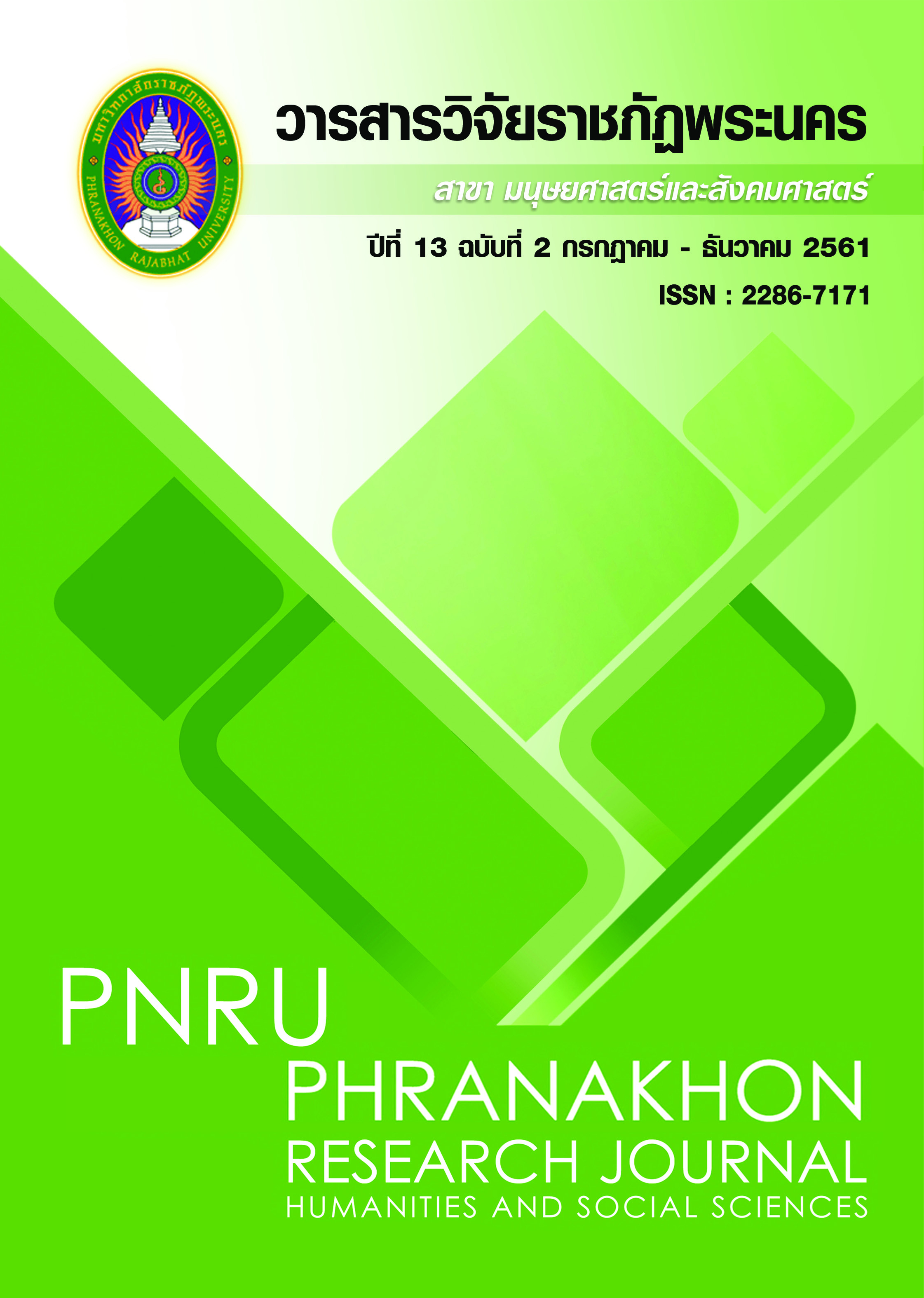การเปลี่ยนแปลงเชิงโครงสร้างและความสัมพันธ์ระหว่างอัตราแลกเปลี่ยนกับดัชนีตลาดหลักทรัพย์ในกลุ่มประเทศสมาชิกอาเซียน
Main Article Content
บทคัดย่อ
การศึกษานี้มีวัตถุประสงค์เพื่อศึกษาความสัมพันธ์ระหว่างอัตราแลกเปลี่ยนกับดัชนีตลาดหลักทรัพย์ในกลุ่มประเทศอาเซียน 5 ประเทศ ได้แก่ ไทย สิงคโปร์ มาเลเซีย ฟิลิปปินส์ และ อินโดนีเซีย โดยคำนึงถึงการเปลี่ยนแปลงโครงสร้างของตัวแปร ซึ่งได้ทำการศึกษาข้อมูลแบบรายเดือน ในช่วงเดือนมกราคม พ.ศ. 2540 ถึงเดือนธันวาคม พ.ศ. 2557 โดยในส่วนแรกได้ทำการทดสอบความนิ่งของข้อมูลด้วยวิธี ADF test พบว่าข้อมูลมีความนิ่ง แต่เมื่อทำการทดสอบความนิ่งตามวิธีของ Zivot & Andrews (1992) กลับพบว่าในส่วนของอัตราแลกเปลี่ยนเงินดอลลาร์สิงคโปร์ต่อดอลลาร์สหรัฐ อัตราแลกเปลี่ยนเงินเปโซฟิลิปปินส์ต่อดอลลาร์สหรัฐ อัตราแลกเปลี่ยนเงินรูเปียอินโดนีเซียต่อดอลลาร์สหรัฐ ดัชนีตลาดหลักทรัพย์สิงคโปร์ ดัชนีตลาดหลักทรัพย์ฟิลิปปินส์ และดัชนีตลาดหลักทรัพย์อินโดนีเซีย มีความไม่นิ่งของข้อมูล ในส่วนที่สองได้ทำการวิเคราะห์หาความสัมพันธ์ในระยะยาวของตัวแปรโดยวิธีของ Gregory & Hansen (1996) พบว่าตัวความสัมพันธ์ระหว่างอัตราแลกเปลี่ยนเงินต่อดอลลาร์สหรัฐกับดัชนีตลาดหลักทรัพย์ของประเทศไทย สิงคโปร์ มาเลเซีย และฟิลิปปินส์ มีความสัมพันธ์ตามสมมติฐานที่ตั้งไว้ คือ เมื่ออัตราแลกเปลี่ยนเพิ่มขึ้น จะส่งผลให้ดัชนีตลาดหลักทรัพย์ลดลง มีแต่ความสัมพันธ์ระหว่างอัตราแลกเปลี่ยนเงินรูเปียต่อดอลลาร์สหรัฐกับดัชนีตลาดหลักทรัพย์ของประเทศอินโดนีเซียเท่านั้นที่เครื่องหมายสัมประสิทธิ์ไม่ตรงตามสมมติฐาน
Article Details
บทความที่ได้รับการตีพิมพ์เป็นลิขสิทธิ์ของมหาวิทยาลัยราชภัฏพระนคร
ข้อความที่ปรากฏในบทความแต่ละเรื่องในวารสารวิจัยราชภัฏพระนครเล่มนี้เป็นความคิดเห็นส่วนตัวของผู้เขียนแต่ละท่านไม่เกี่ยวข้องกับมหาวิทยาลัยราชภัฏพระนคร และคณาจารย์ท่านอื่นๆในมหาวิทยาลัยฯ แต่อย่างใด ความรับผิดชอบองค์ประกอบทั้งหมดของบทความแต่ละเรื่องเป็นของผู้เขียนแต่ละท่าน หากมีความผิดพลาดใดๆ ผู้เขียนแต่ละท่านจะรับผิดชอบบทความของตนเองแต่ผู้เดียว
เอกสารอ้างอิง
Bello, Z. (2013). The association between exchange rates and stock returns. Investment Management & Financial Innovations. 10(3), 40-45.
Dickey, D. A., & Fuller, W. A. (1979). Distribution of the estimators for autoregressive time series with a unit root. Journal of the American Statistical Association, 74(366), 427-431.
Engle, R. F., & Granger, C. W. J. (1987). Cointegration and error correction: Representation, estimation and testing. Econometrica, 55(2), 251-276.
Gregory, A. W. (1996). Residual-based tests for cointegration in models with regime shifts. Journal of Econometrics. 70. 99-126.
Mgammal, M. H. H. (2012). The effect of inflation, interest rates and exchange rates on stock prices comparative study among two GCC countries. International Journal of Finance & Accounting. 1(6), 179-189.
Newey, W. K., & West, K. D. (1987). A simple, positive semi-definite, heteroskedasticity and autocorrelation consistent covariance matrix. Econometrica, 55(3): 703–708.
Nimanusornkul, K., & Nimanusornkul, C. (2012). The relationship between foreign exchange rate and industrial price index in Thailand. CMU Journal of Economics, 16(2), 70-86. (in Thai)
Perron, P. (1989), The great crash, the oil price shock, and the unit root hypothesis. Econometrica. 57, 1361-1401.
Said, S. E., & Dickey, D. A. (1984). Testing for unit roots in autoregressive-moving average models of unknown order. Biometrika, 71(3), 599-607.
Sukcharoensin, S. & Sukcharoensin, P. (2015). The analysis of stock market development indicators and assessment of stock markets among ASEAN Economic Community (AEC) members. Bangkok: National Institute of Development Asminitration. (in Thai)
Suriani, S., Kumar, M.D., Jamil, F. & Muneer, S. (2015). Impact of exchange rate on stock market. International Journal of Economics & Financial Issues. 5(Special issue), 385-388.
Tian, G. G., & Ma, S. (2010). The relationship between stock returns and the foreign exchange rate: the ARDL approach. Journal of the Asia Pacific Economy, 15(4), 490-508.
Zivot, E. and Andrew, D. W. K. (1992). Further evidence on the great crash, the oil-price shock, and the unit-root hypothesis. Journal of Business & Economics Statistics. 10(3), 251-270.


